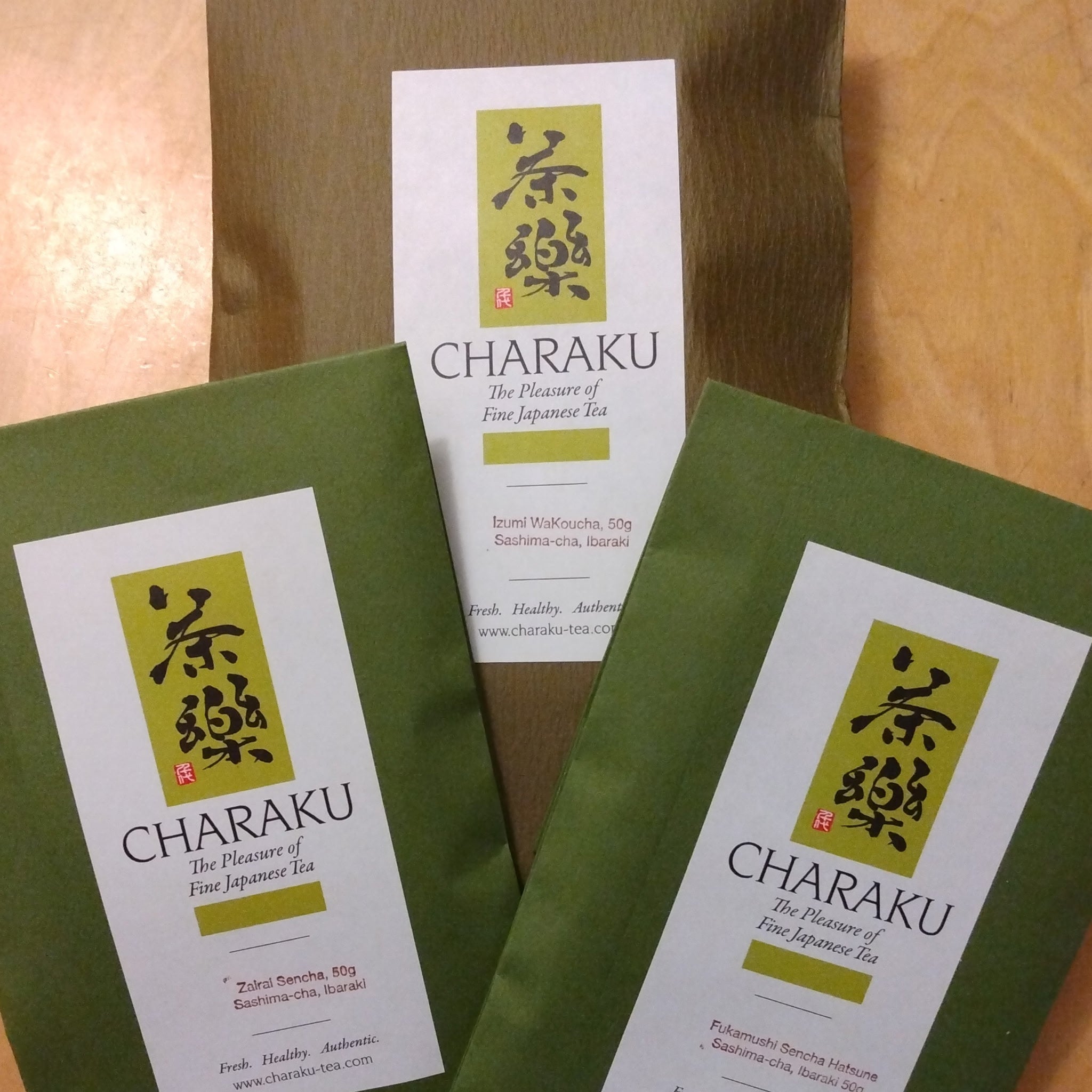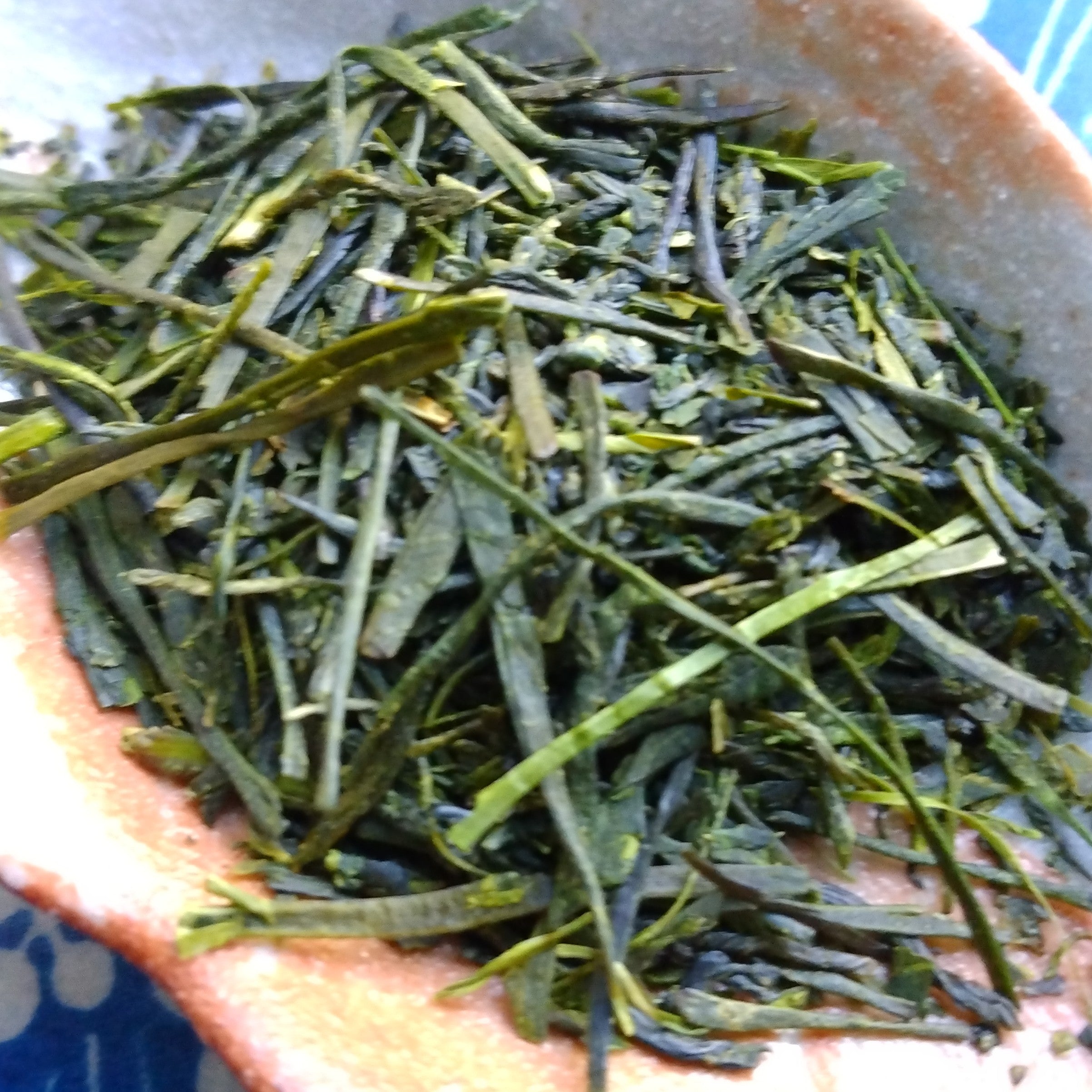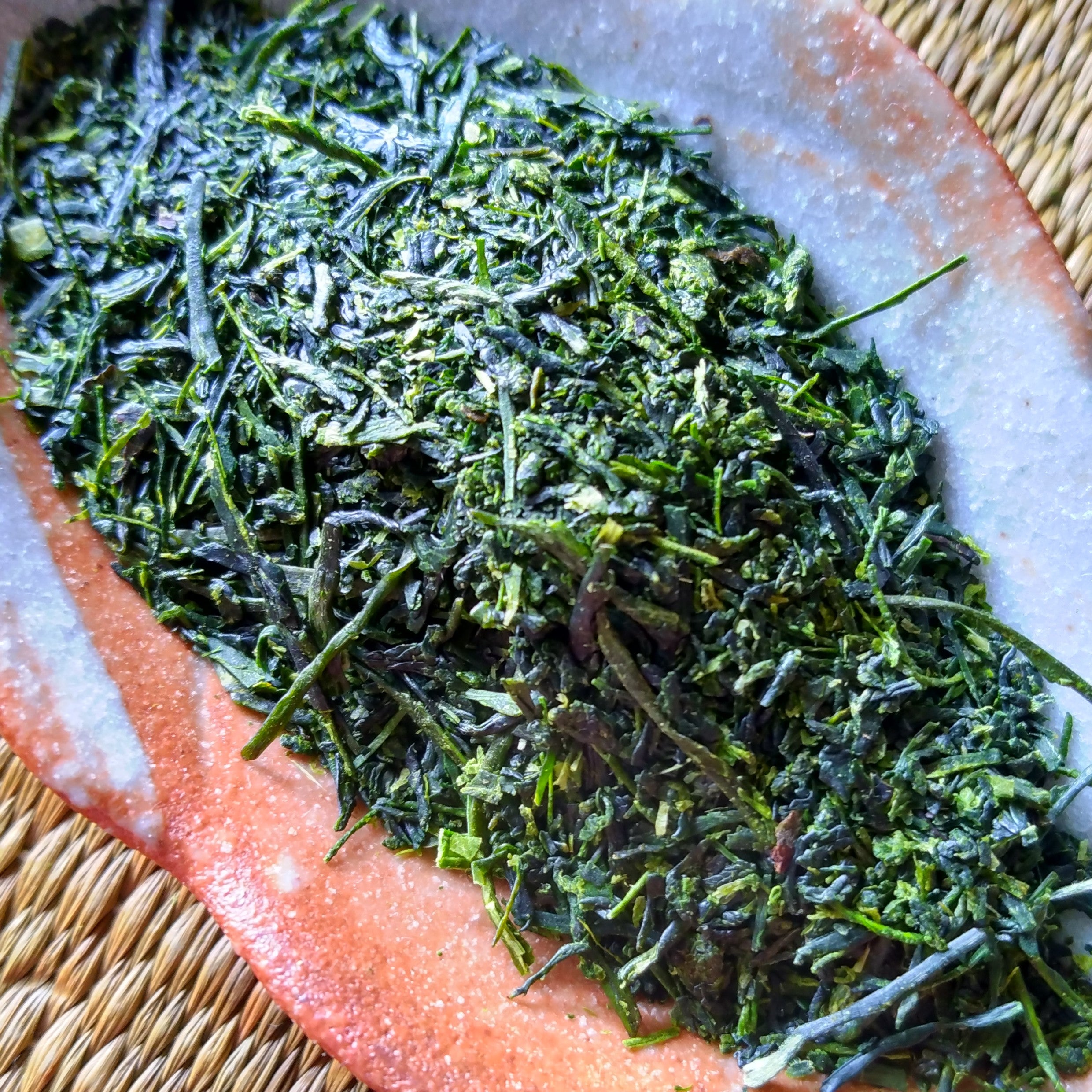Description
A combination pack of three different, and fine, Sashima teas from Ibaraki Prefecture grown by the Nagano-en Tea Farm: Zairai Sencha, a native seed sencha with standard steaming and a sweet grassy flavor and mildly astringent finish; Hatsune Sencha, a fukamushi (deep-steamed) sencha with a smooth full body and well-balanced sweetness and astringency; and Izumi WaKoucha, a Japanese black tea that drinks much like a dark oolong with light sweetness, floral notes, and very little astringency.
Sashima Zairai Sencha; Nagano-en Tea farm, Sakai-machi, Ibaraki, 50g. 2025 Shincha (New Harvest Tea).
Origin: Nagano-en Tea Farm, Sakai Town, Sashima District, Ibaraki Prefecture. Grown with no chemical fertilizers.
Cultivar: Zairai
This Zairai (Native Varietal) Sencha infuses to a medium-bodied light golden green on the first infusion, then goes to a full-bodied rich forest green on the second. There is a gentle grassy aroma, as well as sweet grassy flavor leading to a moderately astringent finish. By the third infusion, the astringency wanes quite a bit into a smooth and mildly sweet finish. The first time I had this tea, I said to myself, "This is is the taste of Japanese Green Tea, not pretentious or too subtle, just good green tea flavor."
|
Sashima Hatsune Fukamushi Sencha; Nagano-en Tea farm, Sakai-machi, Ibaraki, 50g. 2025 Shincha (New Harvest Tea). The "Hatsune"-named Sencha from Nagano-en was harvested a bit later than the "Hayama" tea, when the color and umami are firmly developed in the leaves. It has a deep taste and color, with a smooth full body. It infuses to a light to dark forest green on the 1st through 3rd infusions and has a light grassy aroma. The amami (sweetness) is like sweet grass and melon, but it is well-balanced with a medium shibumi (astringency) throughout the first infusion and second infusions. Astringency can develop quickly in later infusions, but can be controlled with very brief steeping times (5-10 seconds). This is a flavorful and rich Fukamushi Sencha that can have the Japanese shibumi feeling as strong or as mellow as one likes. Sashima Izumi WaKoucha (Japanese Black Tea)/Oolong; Nagano-en Tea farm, Sakai-machi, Ibaraki, 50g. 2025 1st Harvest (May 21). This 1st Harvest Black Tea using the somewhat rare Izumi cultivar has won awards in 2023 and 2024. It infuses to clear pale pink color (mauve?) with a light aroma that is both roasted and floral. It has a full rounded mouthfeel and a light sweetness of honey and flowers with very little astringency and a smooth finish. Definitely, a black tea to drink straight. The teas made by Hanamizu Michio of Nagano-en Tea Farm are complex and unique. When I mentioned to him that his black teas reminded me of the darker end of the Taiwanese Oolong spectrum, or of lighter Chinese Black Teas (vs the Assam-type Black Teas that make up much of the Japanese WaKoucha offerings); he informed that he had studied Oolong production in Taiwan and also uses some Chinese production equipment and technique. The Nagano-en Tea Farm was established in the post-WWII Agrarian Reform Period. Nagano Kanmochi, and his son Kanji, cleared their land in Sashima, Ibaraki, to start growing tea. By the 1970's domestic demand for tea was beginning to slump and then head of the farm Nagano Motoaki had to diversify into other ventures. When his daughter, Akiko, married Hanamizu Michio, they decided to revive the tea farm in 2009, and also opened a tea cafe in 2020. Now, he's earning awards for his innovative teas. Sashima-gun (Sashima District) is in the southwestern part of Ibaraki Prefecture, near the intersections of Ibaraki, Chiba, Saitama, Gumma, and Tochigi Prefectures, and just slightly northeast of Tokyo. Tea cultivation in the region goes back to the early 1600's, but not until the 1800's did the modern tea productions methods, similar to those used today, begin with a man named Nakayama Motonari, often called the "Father of Sashima Tea". After Japan was (forcibly) opened to trade with the U.S. in the 1850's, teas from Sashima were the first to be exported to the U.S. in 1859, via the newly opened Port of Yokohama. It was through Nakayama's connections in the capital that Sashima tea was able to have this distinction. |








